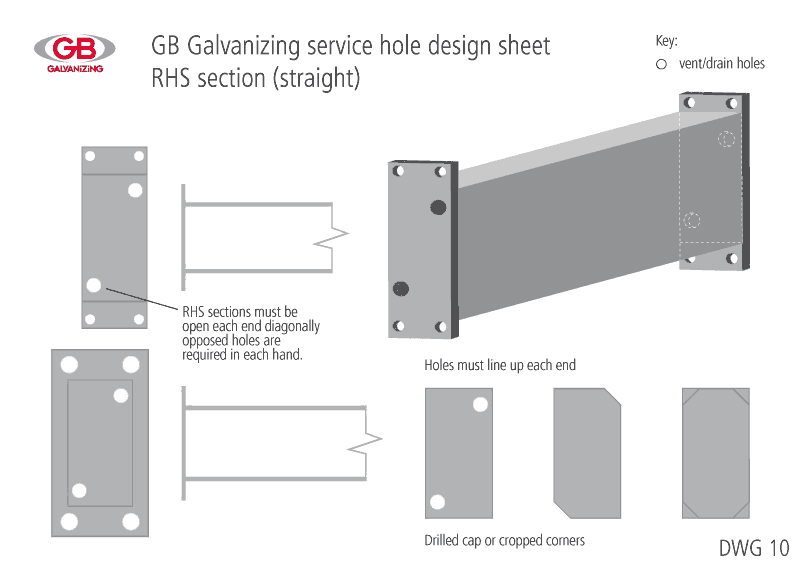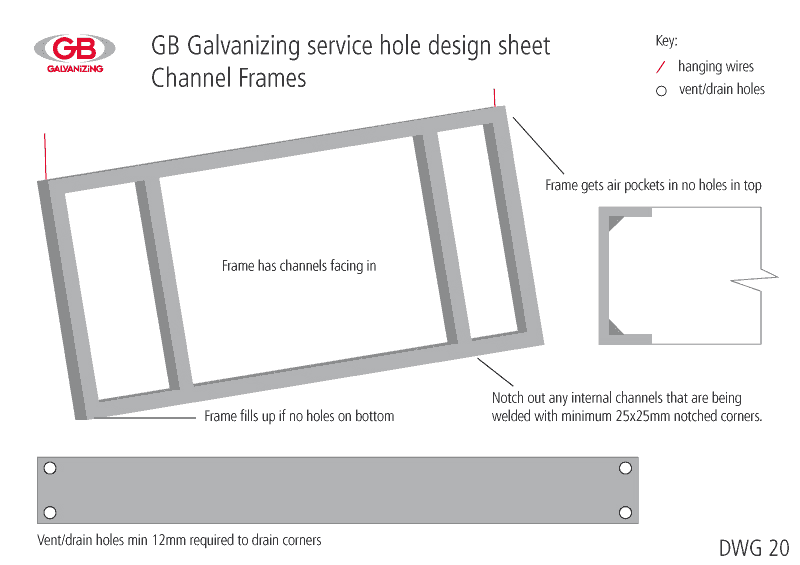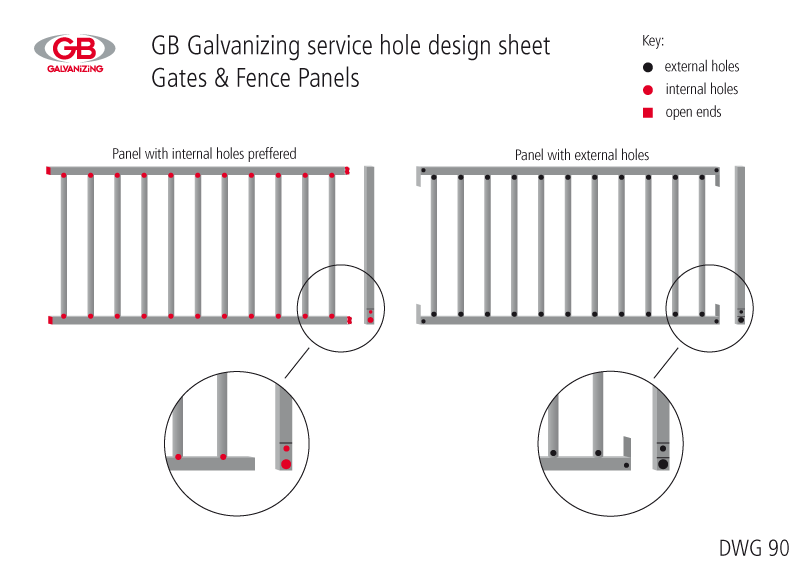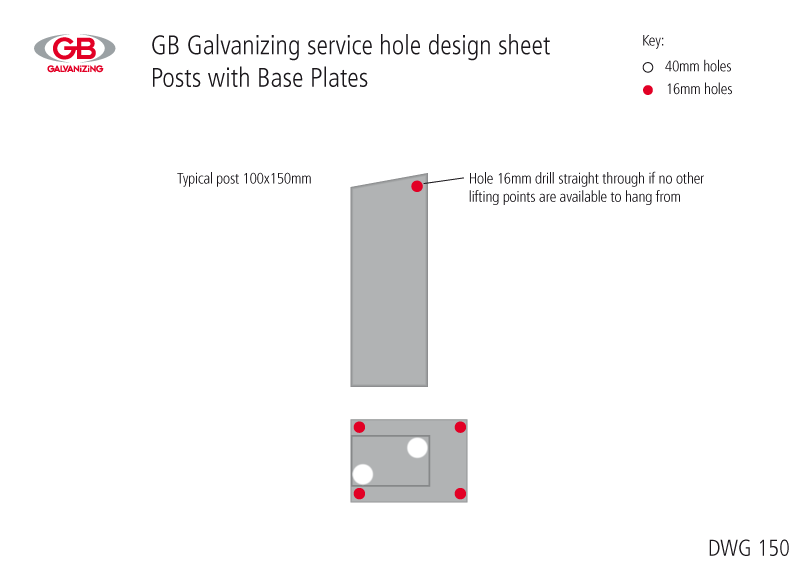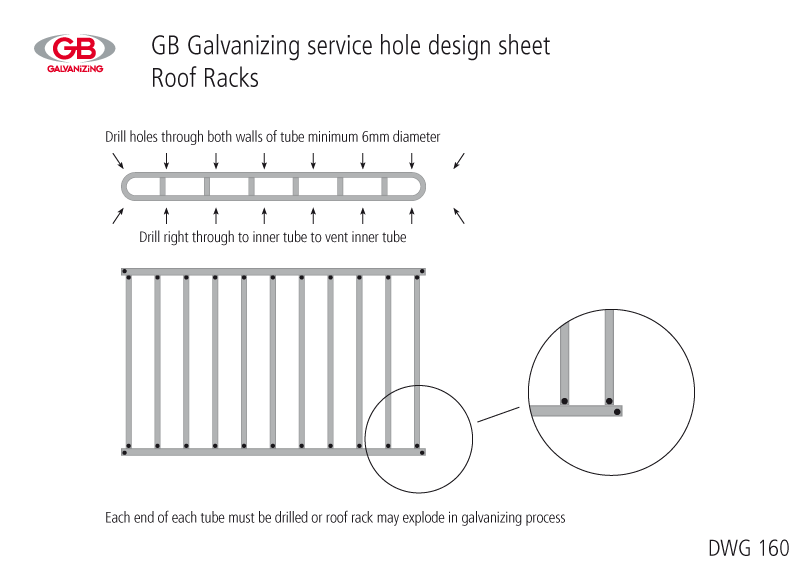Preparing your box trailer for galvanizing
This information sheet has been prepared by GB Galvanizing to take the guess work out of preparing a box trailer for Galvanizing. This has been broken down into the following four sections:
- Surface Preparation
- Venting / Draining Holes
- Galvanizing Parts and Accessories
- Minimizing Distortion
- Paperwork Required
Part 1 – SURFACE PREPARATION.
Many box trailers will require sand blasting before they are ready for Galvanizing.
Some trailers will not need sand blasting if
- The trailer is made of new material or;
- The trailer has already been Galvanized and the zinc layer is unbroken.
(Note : Acid stripping of old Galvanized trailers is an extra charge.)
Any trailers that are painted require sand blasting (Blue or Green paint supplied on new tube will not require sand blasting).
Part 2 – VENTING / DRAINING HOLES.
Every tubular section of the trailer must have an opening at each end. This allows zinc to enter the tube and air to escape in order to prevent explosions due to pressure build ups.
Holes must be as close as possible to the ends of the tube. (Hole size should be a minimum of one third the size of the tube – ie: a 4Omm x 4OMM tube requires a minimum hole size of 13mm.)
Part 3 – GALVANIZING PARTS AND ACCESSORIES
Leaf Springs
Leaf springs can not be Galvanized due to the fact, that they become very brittle and can fail at any time under load with no warning. There are Galvanized leaf springs available in the market, but these are specially manufactured to avoid embrittlement.
Tow Couplings
Tow couplings must be removed from the trailer or they will seize once Galvanized.
Threaded Items
Any threaded items will need the threads re cut after Galvanizing so that nuts and bolts will fit correctly once they are Galvanized. We do not recommend that U bolts be re galvanized. It is more economical to discard them and purchase pre galvanized U bolts with nuts to suit.
Mud Guards
Trailer mud guards that are separate to the main frame have by far the best Galvanizing finish and can be replaced more easily if you have an accident. Mud guards welded to the main frame could suffer some handling damage when turning the trailer in the Galvanizing process.
Part 4 – MINIMIZING DISTORTION.
Box trailers are very susceptible to distortion usually because they are not designed with Hot Dip Galvanizing in mind, as the name suggests Hot Dip Galvanizing is a hot process , your trailer will be immersed in molten zinc at 450 degrees Celsius. Many box trailers have thin plate welded to a solid frame, tllis can cause problems when it is dipped because the plate builds up and expands faster than the frame does causing the frame to buckle.
So what do I do?
Preferred Method – If possible it is advisable to Galvanize the floor plate separately from the frame and bolt it in after Galvanizing using countersunk head bolts.
Next Preferred Method – Use thicker floor plate (more rigid and less likely to buckle)
Non Preferred Method – Leave trailer with welded floor plate in and accept that it will be more likely to distort.



